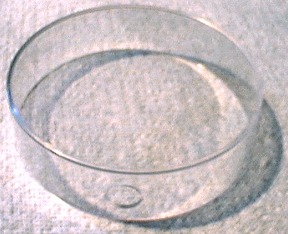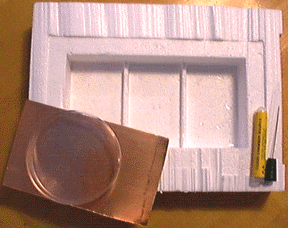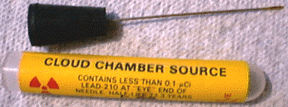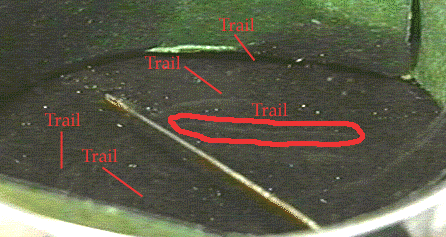
Charles T.R. Wilson
The cloud chamber was invented in 1896 by Charles T.R. Wilson at the Cavendish Laboratory, University of Cambridge, England.
He discovered that charged particles travelling through this device would leave "thin, wispy trails".
How does this cloud chamber work?
This cloud chamber was purchased from Cenco scientific products.

The instructions that came with it stated that the plastic vessel be used upright, with the lid on. Poor results were obtained using this method. Instead, we discarded the plastic lid and inverted the dish . A styrofoam piece, once used for shipping, was cut to the right size with a hot nichrome wire, forming an insulated container that can hold nearly a pound of dry ice.

The styrofoam container was filled with dry ice that was crushed to a powder. A thin copper sheet was placed directly on top of the dry ice. A disc of thin black cardboard (included with the cloud chamber) was placed on the copper sheet. An absorbent paper strip was dipped in pure denatured alcohol (ethanol) and fitted to the inside of the chamber. The chamber was placed upside down on the cardboard disc (on top of the copper plate). A pin tipped with alpha-emitting lead-210 (also purchased from Cenco) was then inserted into the hole on the side of the chamber.

After about 5 minutes, tiny trails of vapor were observed shooting from the head of the pin outward.

The trails are much more exciting when viewed in motion! Quicktime Movie 893 k - No Sound)
What is the principle behind this?
The dry ice cools the alcohol vapor until it is supersaturated. The vapor condenses on ions left in the wake of the alpha particles, as each ion becomes a nucleation site for droplet condensation.